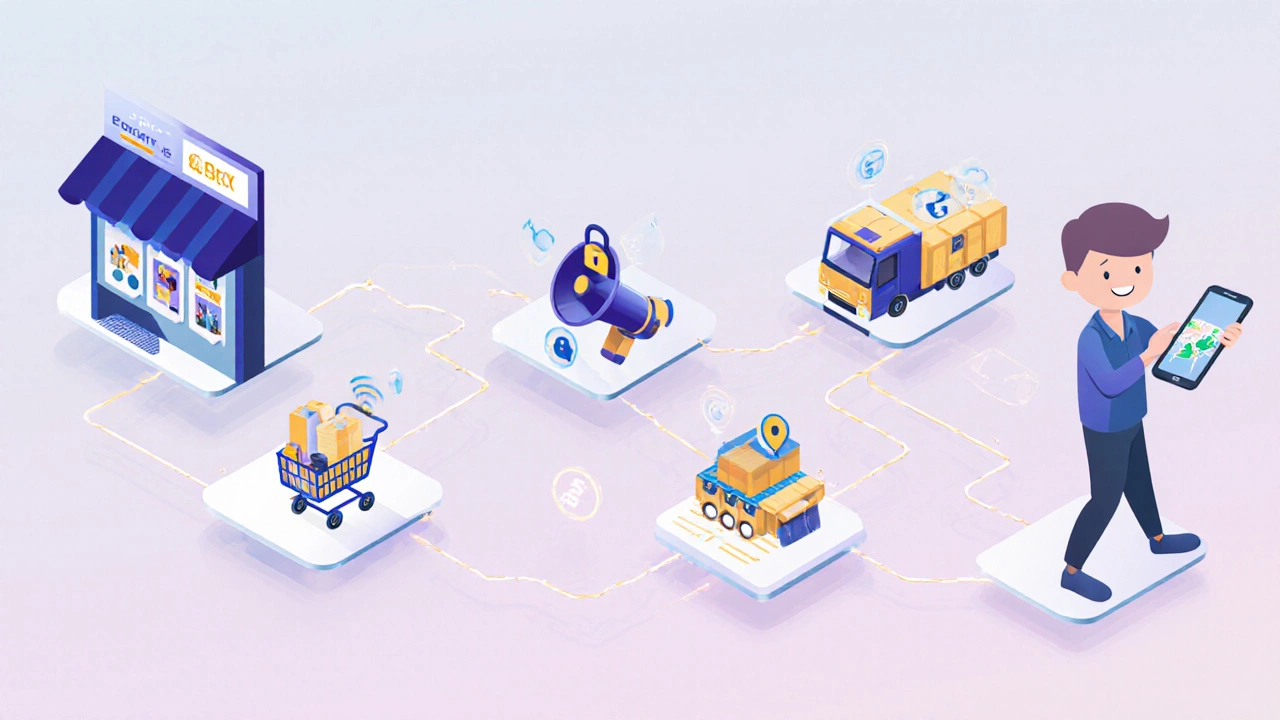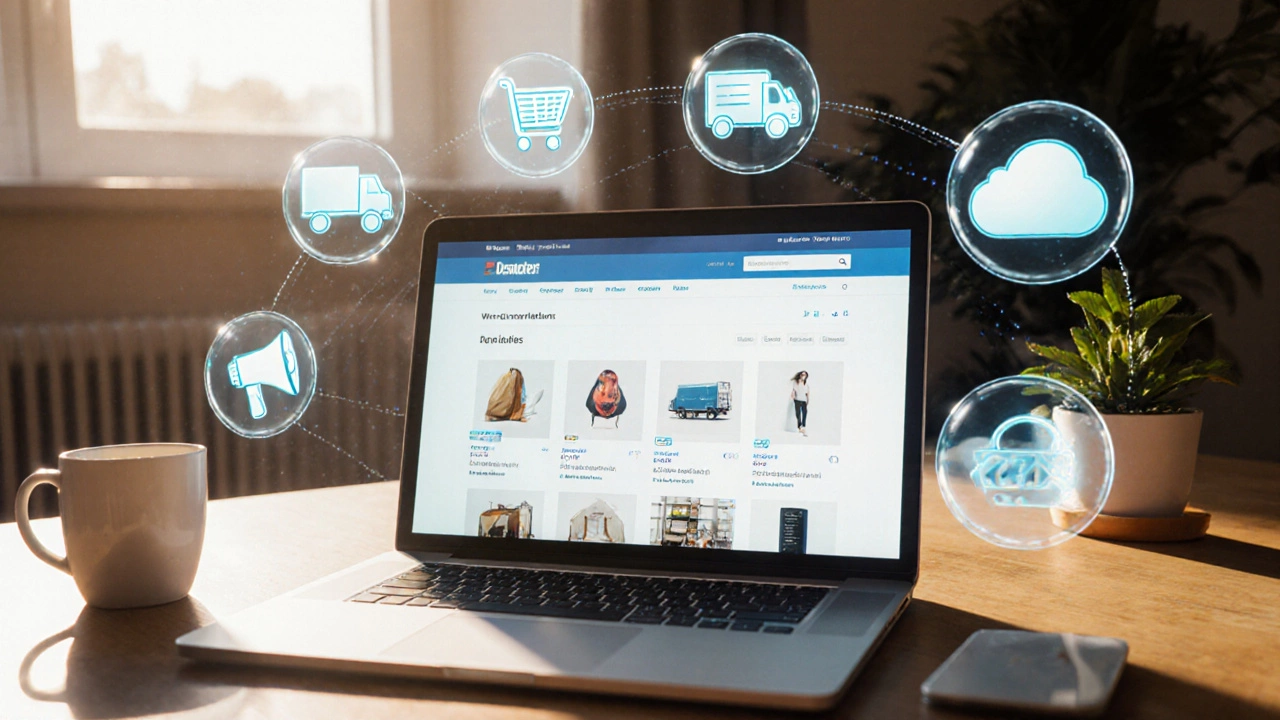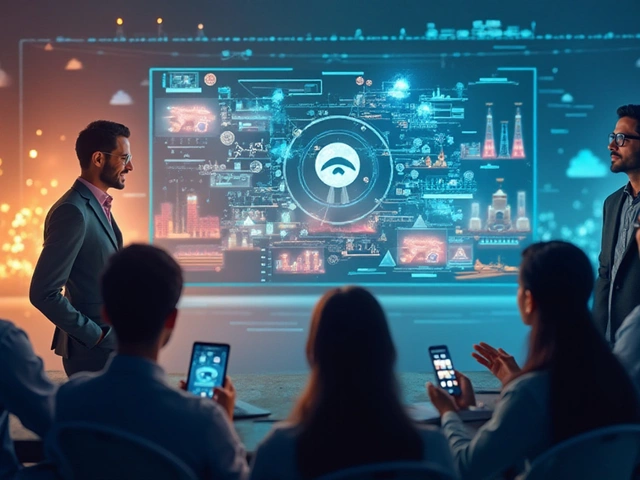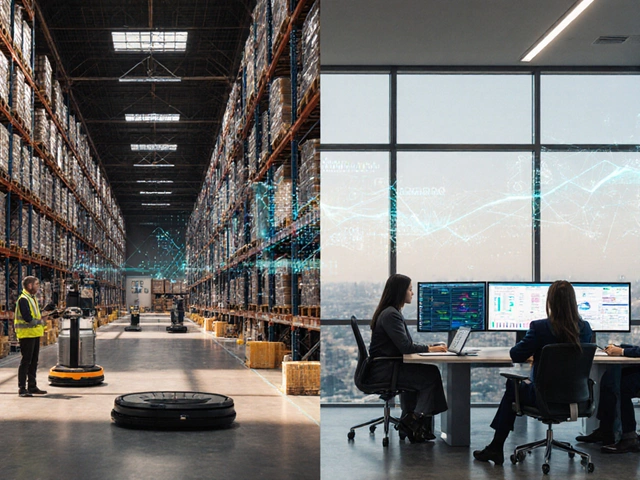E-Commerce Model Explorer
Explore how different e-commerce models connect buyers and sellers in various scenarios.
B2C
Business to Consumer
B2B
Business to Business
C2C
Consumer to Consumer
C2B
Consumer to Business
Quick Quiz: Match the Model
When you hear the term E‑commerce is the buying and selling of goods or services over the internet, you probably picture a website with a shopping cart and a credit‑card checkout. In reality, e‑commerce is a whole ecosystem that links retailers, customers, payment systems, logistics and marketing-all happening online.
Key Takeaways
- E‑commerce means any commercial transaction conducted via digital channels.
- The ecosystem includes a website, shopping cart, payment gateway, fulfillment, and digital marketing.
- Four main models-B2C, B2B, C2C, C2B-serve different buyer‑seller relationships.
- Benefits such as global reach, 24/7 availability and data‑driven insights outweigh challenges like security and logistics.
- Launching an online store requires choosing a platform, setting up payment, arranging fulfillment and driving traffic.
Core Components of an E‑Commerce Operation
Think of an online business as a chain of linked parts. Each part must work reliably for the whole to succeed.
- Online store is the digital storefront where products are displayed and browsed. It can be a custom website or a hosted platform like Shopify.
- Shopping cart is software that lets shoppers collect items before checkout. Modern carts remember items, apply coupons and calculate taxes.
- Payment gateway is the service that authorises and processes credit‑card, digital‑wallet or bank‑transfer payments. Popular options include Stripe, PayPal and Square.
- Digital marketing is the set of tactics-SEO, social ads, email, influencer outreach-used to attract and retain customers.
- Fulfilment is the process of picking, packing and shipping orders to the buyer. It can be handled in‑house or outsourced to a 3PL.
- Logistics is the network that moves goods from warehouse to customer, including carrier selection and tracking.
- Customer is the end‑user who discovers, evaluates and purchases a product online.
- Marketplace is a platform that hosts multiple independent sellers, such as Amazon or Etsy.

Major E‑Commerce Models
Different buyer‑seller relationships define the main e‑commerce models. Below is a quick comparison that helps you pinpoint which one fits your business.
| Model | Typical Participants | Key Example | Revenue Flow |
|---|---|---|---|
| B2C | Business → Consumer | Retailer websites like Zalando | Product sale price minus fees |
| B2B | Business → Business | Wholesale portals such as Alibaba | Bulk order pricing, often with credit terms |
| C2C | Consumer → Consumer | eBay, Depop | Listing fees + final‑value commission |
| C2B | Consumer → Business | Freelance marketplaces like Upwork | Service fee charged to the business |
Why E‑Commerce Matters: Benefits for All Parties
The e-commerce definition isn’t just semantics; it translates into real advantages.
- Global reach: A small UK boutique can sell to customers in Tokyo without opening a physical shop.
- 24/7 availability: Transactions never stop, driving higher annual sales.
- Cost efficiency: Lower overhead compared to brick‑and‑mortar - no rent, fewer staff.
- Data insights: Every click, cart addition and purchase feeds analytics that guide product development.
- Personalised experience: AI‑driven recommendations boost average order value by up to 30% (source: McKinsey 2024).
Common Challenges and How to Tackle Them
Running an online business isn’t a walk in the park. Here are the pain points you’ll likely hit and practical ways to smooth them out.
- Security & fraud: Use SSL certificates, PCI‑DSS compliant payment gateways and two‑factor authentication.
- Logistics complexity: Partner with a reliable 3PL, negotiate carrier rates and provide real‑time tracking to reduce cart abandonment.
- Customer trust: Display clear return policies, authentic reviews and trust badges prominently.
- Technical downtime: Host on a scalable cloud provider and employ CDN caching to handle traffic spikes.
Step‑by‑Step Checklist to Launch Your First Online Store
- Define your niche and target customer. Research demand using Google Trends and competitor analysis.
- Select an e‑commerce platform (Shopify, WooCommerce, BigCommerce) that matches your budget and technical skill.
- Register a domain name and set up secure hosting with SSL.
- Buy a .co.uk or .com domain that reflects your brand.
- Enable HTTPS to protect data.
- Design your online store - choose a responsive theme, add high‑quality product images and write SEO‑friendly descriptions.
- Configure the shopping cart and integrate a payment gateway. Test transactions in sandbox mode.
- Set up fulfilment: decide whether you’ll ship from home, use a fulfilment centre, or partner with a 3PL. Define shipping zones and rates.
- Launch digital marketing campaigns: start with SEO basics, run Facebook/Instagram ads, and collect email leads for newsletters.
- Monitor performance: use Google Analytics and platform dashboards to track traffic, conversion rate and average order value.
- Iterate: based on data, optimise product pages, tweak ads and improve checkout speed.
Future Trends Shaping E‑Commerce (2025‑2026)
Staying ahead means watching where technology heads next.
- Mobile‑first commerce: Over 70% of US e‑commerce sales now come from smartphones (Statista 2025).
- Social shopping: Instagram Checkout and TikTok Shopping let users buy without leaving the app.
- AI‑driven personalization: Real‑time product recommendations powered by machine‑learning increase upsell rates.
- AR/VR experiences: Virtual try‑ons for fashion and furniture reduce return rates.
- Voice commerce: Smart speakers handle repeat purchases; brands are optimising for voice search.
Frequently Asked Questions
What is the difference between e‑commerce and e‑business?
E‑commerce specifically refers to buying and selling online, while e‑business covers all digital processes a company uses-including internal operations, supply‑chain management and customer service.
Do I need a physical inventory to start selling online?
Not always. You can use dropshipping, where a supplier ships directly to the customer, or sell digital products like e‑books, which require no stock.
How important is SEO for an e‑commerce site?
SEO is critical because organic search drives up to 45% of traffic for many online stores. Optimising product pages, using schema markup, and building backlinks improve visibility.
What payment methods should I offer?
At a minimum, provide credit/debit cards via a PCI‑compliant gateway, and a popular digital wallet like PayPal or Apple Pay. Adding options such as Klarna or Afterpay can boost conversion for big‑ticket items.
How do I handle international shipping?
Partner with a global carrier (DHL, UPS) or a specialised cross‑border fulfillment service. Be clear about customs duties, provide accurate HS codes, and display delivery estimates before checkout.





